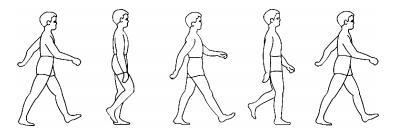| 惯性动捕数据驱动下的智能下肢假肢运动意图识别方法 |
| |
| 引用本文: | 苏本跃, 王婕, 刘双庆, 盛敏, 向馗. 惯性动捕数据驱动下的智能下肢假肢运动意图识别方法. 自动化学报, 2020, 46(7): 1517-1530. doi: 10.16383/j.aas.c180070 |
| |
| 作者姓名: | 苏本跃 王婕 刘双庆 盛敏 向馗 |
| |
| 作者单位: | 1.安庆师范大学计算机与信息学院 安庆 246133;;2.安徽省智能感知与计算重点实验室 安庆 246133;;3.安庆师范大学数学与计算科学学院 安庆 246133;;4.武汉理工大学自动化学院 武汉 430070 |
| |
| 基金项目: | 国家自然科学基金61603003国家自然科学基金11471093教育部科技发展中心"云数融合科教创新"基金2017A09116安徽省高校优秀拔尖人才培育资助项目gxbjZD26 |
| |
| 摘 要: | 
为了解决传统意图识别方法使用多模态传感器信号所带来的复杂性以及识别转换模式一般具有滞后性等问题, 本文提出了基于惯性传感器的智能下肢假肢的运动意图实时识别方法.从模式识别的角度看, 在对象空间到模式空间的转换中, 对运动模式尤其是运动转换模式进行了重定义; 在模式采集中, 采用在患侧的运动模式进行转换之前, 采集绑定在健侧的传感器于摆动相前期所产生的时序运动数据, 选择均值、方差等特征统计量和支持向量机分类器对其进行特征选择提取与特征分类的策略, 实现对残疾人运动意图准确、实时地识别.实验结果表明, 本文所提出的方法可以识别出单肢截肢患者在不同地形下的运动意图, 包括平地行走、上楼、下楼、上坡、下坡5种稳态模式, 识别率可达到97.
52 %, 并且加入在5种模式之间相互转换的转换模式之后, 识别率可达到95.12 %.本文方法可以极大提高智能下肢假肢的控制性能, 实现智能假肢能根据人的运动意图在多种运动模式之间进行自然、无缝的状态切换.

|
| 关 键 词: | 运动意图识别 惯性传感器 模式空间 转换模式 摆动相 |
| 收稿时间: | 2018-01-27 |
|
| 点击此处可从《自动化学报》浏览原始摘要信息 |
|
点击此处可从《自动化学报》下载免费的PDF全文 |
|



